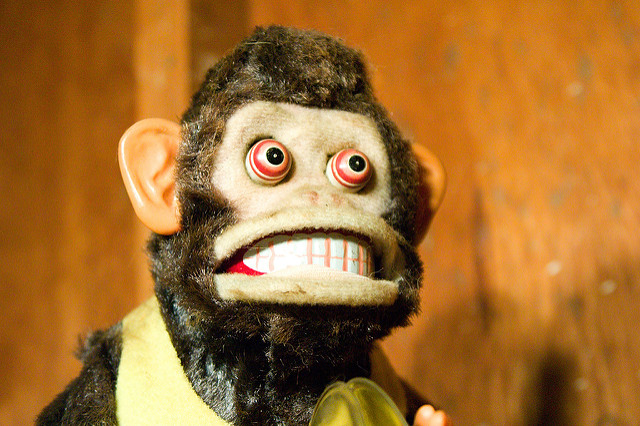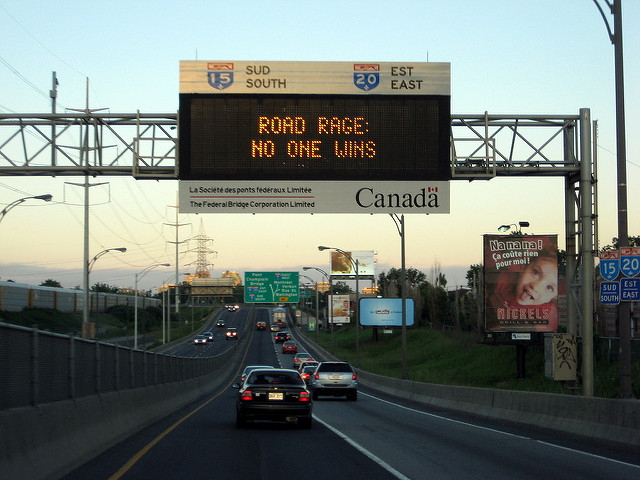Follow me:

Date posted: December 29th 2016
Book Title: Seven Habits of Highly Effective People
Book-in-a-sentence
What matters the most is how we respond to what we experience in life
My Summary (audio)
My Summary (text)
Contents
- Introduction
- P/PC balance
- Habit 1: Being proactive
- Habit 2: Begin with the end in mind
- Habit 3: Put first things first
- Public victories
- Habit 4: Think Win/win
- Habit 5: Seek first to understand, then to be understood
- Habit 6: Synergize
- Habit 7: Renewal
- Comments
Introduction
The first thing Stephen talks about is our character and how it defines us. He insists that who we are should not be defined by the outermost part of ourselves (that is our personality) but rather by our innermost foundation, meaning our character. It is very well established from the beginning of the book that there is a key difference between personality and character. Unfortunately many self improvement practices focus on personality only. Mottos like “think positively” or encouragement words like “we can do it!” or company practices that force their employees to smile... always.

Hi! welcome to McDonald's how can I help you?
Image by Jason Scragz via Flickr under Creative Commons license CC BY 2.0
The problem is that these are nothing but illusions. They may help us get by, and perhaps even be successful, but the truth is that they are not shaping the roots of who we are, not even the tree trunk. We can put on a personality mask for a day, fake a smile, and think positively (i.e. grow a couple of leaves). But, to develop a sense of fulfilment, and a confident vision of our lives (which would actually be the tree trunk of our character) is very [very!] different—and most importantly, it takes a lot of effort and time. We can't just fake that for a day!
.png)
The difference between personality and character
Image under Creative Commons Attribution-ShareAlike 4.0 International license via www.chasanabria.com
Tree image under Public Domain via Wikimedia Commons
If you look at the image above, it's very easy to see which one will collapse first. A ‘think positive attitude’ or a ‘true sense of fulfilment and confidence.’ When shit goes south, our leaves will be shaken down! And only our roots and our trunk will be left behind. But the beauty of this analogy is that we only have to water the roots—not the leaves. If we build up a strong character our personality will take care of itself and we won't even have to remind ourselves to “think positively”, we simply will.
That’s pretty much the introduction. Stephen is basically saying that in order to apply what he has to teach, we must have these lessons reach the very core of our character. And that requires time and patience.
Now, aside from being divided in seven habits, the book is divided in two parts. The first part is what he calls the private victories and the second the public victories. The first three habits (private victories) work on our character, strengthen who we are and reinforce the importance of our values. Then, the next three habits (public victories) work on those people around us—and our influence over them—our families, our coworkers, our friends, etc. And finally the last habit is kind of an overall reminder that improvement never stops. It’s not like you’ll read this book and you will immediately be a better person. No, it takes months, even years! And so, the seventh habit reminds us of that.
P/PC Balance
OK, one last thing before we jump into the first habit. There is this thing he calls “P/PC Balance”. Which is, the balance of how productive something is (P), and its capability of remaining productive or its production capability (PC). This is important because all habits whether they are related to us or to our relationship with others, can be measured by this balance. I’m going to give you two simple examples of P/PC balance, a private one and a public one.
The private example is something like our body. If we work very [very] hard, we are very productive right? We may also get a promotion or the respect of our peers, cool! But if we eat shitty food because we tell ourselves we are too busy, or we don’t take vacation because we don't want to “waste time,” that production capability will soon drop. And if we keep doing that for a couple of decades, we will end up retiring to our graves sooner than expected! So one must find that P/PC balance right? (a very simple concept, but often overlooked).
On the public side, if we have someone in our lives who is always there for us and helps us when we need them, that relationship is very productive. And we can accomplish many things with their support, great! But if we are not there when they need us, or we don’t give something back 1 , the relationship weakens and the trust is lost. Again, we must find that P/PC balance....Sounds easy, but if we really think about, it’s actually very difficult to be conscious of this balance. That's how you get financially successful people who are very unhealthy, or politicians rising to the top and then realizing they have no one they can trust, or CEOs who are despised by their employees, or (my personal fear) someone who knows a whole lot about something but nothing at all about everything else… so keep this P/PC balance in mind for the rest of this post because every lesson in this book has a P/PC side to it.
-
It doesn't have to be the same thing they are providing us with ↩

One of the analogies Stephen Covey uses for P/PC balance is the story of The Goose That Laid the Golden Eggs
As you may know, this story is about a guy who found a goose that laid eggs made of gold. He soon got super greedy for that (P)—the gold—and he cut open the goose to get as much as he could… But in doing so he killed the (PC).
So we have to feed that goose and treat it well if you want the golden eggs to keep coming.
Image under Public Domain via Wikimedia Commons
Habit 1: Being proactive
My favorite quote of all times is the basis of this habit and it has to do with my “book‑in‑a‑sentence.” It was Victor Frankl who after being in Nazi concentration camps, and being subjected to terrible things, said that “Between stimulus and response there is a space. In that space is our power to choose our response. In our response lies our growth and our freedom.”

Victor Frankl
Image by Prof. Dr. Franz Vesely via Wikimedia Commons under Creative Commons license CC BY-SA 3.0 DE
I think is worth stopping here for a second and acknowledging that we DO have the power to choose the way we respond to anything, and I mean ANYTHING that is thrown at us.
If someone calls me an ‘idiot’, I can choose how to respond to that right? If someone cuts me in line, I CAN choose how to respond to that as well. For any situation, no matter how difficult it is, we can choose response! We must not react! Choose (god damn it!) Choose!
The same goes for mundane things like ‘today is a rainy day...’ Why don’t we choose how we feel about that? In all these situations people often react instinctively: They call the other person something bigger than an ‘idiot’, or give the person who cut in line the stink eye, or complain all day about the rain—and blame it for their shitty mood. These are all (by definition) reactions, and are often automatic. Let's not do that... let's be proactive! Not reactive...

Road rage is a perfect example of a situation where you can choose your response… Yet there are some many people that react in very volatile ways without even realizing they are doing it.
Image by via Flickr under Creative Commons license CC BY-SA 2.0
This is barely the tip of the iceberg for this habit, but I must move on...
Habit 2: Begin with the end in mind
This one is crucial. Basically anything we do has to have a goal… a purpose. If we don't define it well from the beginning, we are not going to get anywhere. It happens to the best of us, we often get so carried away by activity that we end up forgetting its significance. My favorite analogy of this is when Stephen talks about a group of people trailblazing a path through a jungle. They are deep beneath the trees on swampy soil slashing branches left and right—doing a lot of work, right? But then suddenly someone climbs up a tree all the way to the top, looks around and says “aw shit! this is the wrong jungle!” Don't trailblaze the wrong jungle, make sure you have a set goal and climb on that tree every once in awhile to see if you are still going towards that goal. We often forget what the goal is… I see this all the time in scientific research.
Another valuable thing he talks about in this chapter is writing our own “mission statement.” Who do we want to be in our lives? How do we want to influence those around us? What do we want to accomplish? As a kid we were asked these questions and we probably said: “I want to be a nurse!”, or “I want to be a fireman!”, or “I want to be an astronaut!”... But as an adult these questions are much harder to answer, and most of us don't even like to think about it—because (honestly) it is scary as shit!… Who do we really want to be? That question can't be answered with a title, a profession, or a simple sentence. Think about it…
Click here if you are interested in reading my Mission Statement.
Habit 3: Put first things first
This is all about prioritizing our actions. It has a clever system to make us realize what is urgent and what can wait, but most importantly, whether these things matter at all. We may have deadlines like crazy and normally we freak out about them, but do they matter? Step out for a second and consider what your true priorities are. It also talks about how having a weekly to‑do list, it’s a great way to break our work in more manageable chunks. Essentially scheduling our lives, but most people hate schedules, they feel trapped and feel like they can never keep up with them, right? Well we need to remember that we are the creators of such schedule, and we have the power change it, to bend it, to postpone it, or even just skip it! It’s not set in stone, it’s simply a guideline that helps us organize our minds so we can tackle the tasks one by one. Think about it, every successful human project has had a schedule, whether it is building a house or building a rocket, there is a schedule associated with it, and that schedule helps overcome unexpected issues—so why not have one for our lives?
Here's an example of my schedule. Click on the Next button below to keep reading...

This is an example of a typical week for me. Notice I have an event on Monday called Weekly Goals, during that hour I populate the whole week depending on my current goals. The Barcelona soocer games are optional ;)
Google calendars is the best!!!
Image by Google Calendars
